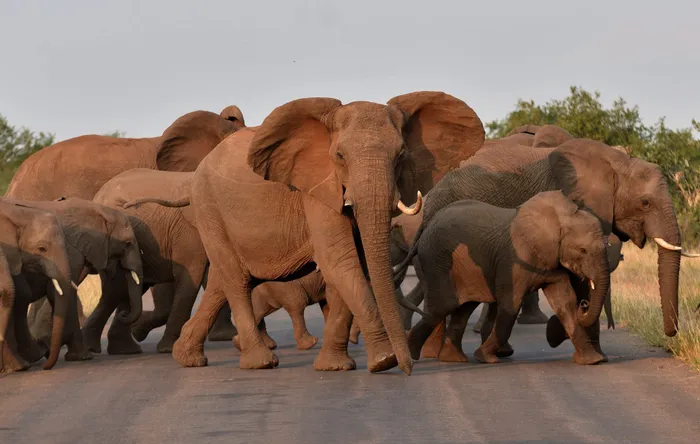South Africa celebrates World Elephant Day with strong conservation commitments
elephants

On World Elephant Day, South Africa highlights the importance of elephant conservation under the theme 'Matriarchs and Memories'.
Image: Independent Newspapers Archives
SOUTH Africa marked World Elephant Day today with a renewed commitment to elephant conservation, as the Department of Forestry, Fisheries and the Environment (DFFE) convened a high-level dialogue with stakeholders at the Southern African Elephant Indaba in KwaZulu-Natal.
This year’s global commemoration, themed ‘Matriarchs and Memories’, coincided with the two-day indaba, held in Bonamanzi, in a region that is home to the country’s second-largest elephant population.
South Africa has a population of approximately 44,000 African savanna elephants, which continues to grow. Most of these elephants inhabit government-protected areas such as Kruger National Park, Mapungubwe National Park, and Tembe Elephant Park, many of which form part of Transfrontier Conservation Areas (TFCAs) where elephants roam across international borders. Additionally, 89 smaller fenced reserves support elephant populations, with an estimated 6,000 elephants under private or community ownership.
“South Africa’s success in recovering elephant populations not only offers hope for the species, but brings also difficult trade-offs in the context of the country’s developmental agenda and needs. As elephant numbers and ranges expand, encounters between people and elephants have increased, particularly in rural communities living near protected areas,” said Deputy Minister Narend Singh.
“Human-elephant conflict can result in crop losses, damage to infrastructure, and in some cases, injury or loss of human life. For many affected families, these incidents can threaten food security and livelihoods. Managing these interactions is essential to ensuring that conservation gains do not come at the expense of community well-being. It requires innovative solutions that promote co-existence, such as, improved land-use planning, early-warning systems, community-based monitoring, and benefit-sharing initiatives that recognise the costs of living alongside elephants,” Singh said.
The department's efforts align with South Africa’s White Paper on the Conservation and Sustainable Use of Biodiversity, which promotes a vision of “Thriving People and Nature.” The policy aims to balance conservation with sustainable use, transformation, access, and benefit sharing.
“Whilst re-imagining conservation in the country, guided by the four goals of the White Paper policy on Conservation and Sustainable Use of South Africa’s Biodiversity, that seeks to balance conservation with sustainable use, transformation, access and benefit sharing, our aspiration is to ensure that thriving elephants contribute to improving the well-being of people and ecosystems simultaneously; and serves as a flagship for driving change towards ‘Thriving People and Nature’,” Singh said.
The Deputy Minister also emphasised the elephants' role as a cultural symbol. “Our elephants are a national treasure, a keystone species, an integral part of our heritage and plays a significant role in maintaining a balance where the creation of value exceeds consumption, crucial for sustaining and increasing South Africa’s social and natural capital, which are fundamental for inclusive socio-economic development.”
Despite conservation gains, elephant populations still face threats including habitat loss, climate change, and human-wildlife conflict. Addressing these challenges, Singh stressed, requires collective action: “It is therefore imperative for South Africa to harness collaboration, co-learning and co-working, so that our collective wisdom, capacity and actions bring forth a flourishing world and thriving life.”
The Elephant Indaba brings together policy developers, civil society, scientists, traditional leaders, health practitioners, and communities bordering protected areas. The discussions are aimed at developing collaborative, community-based solutions to ensure elephant conservation efforts benefit both the species and the people living alongside them.